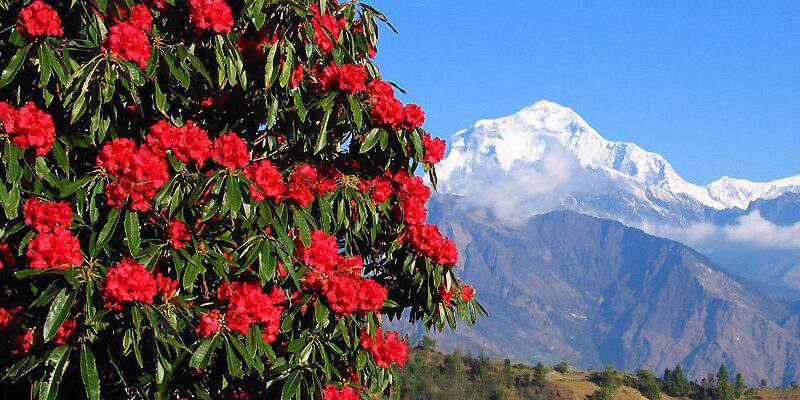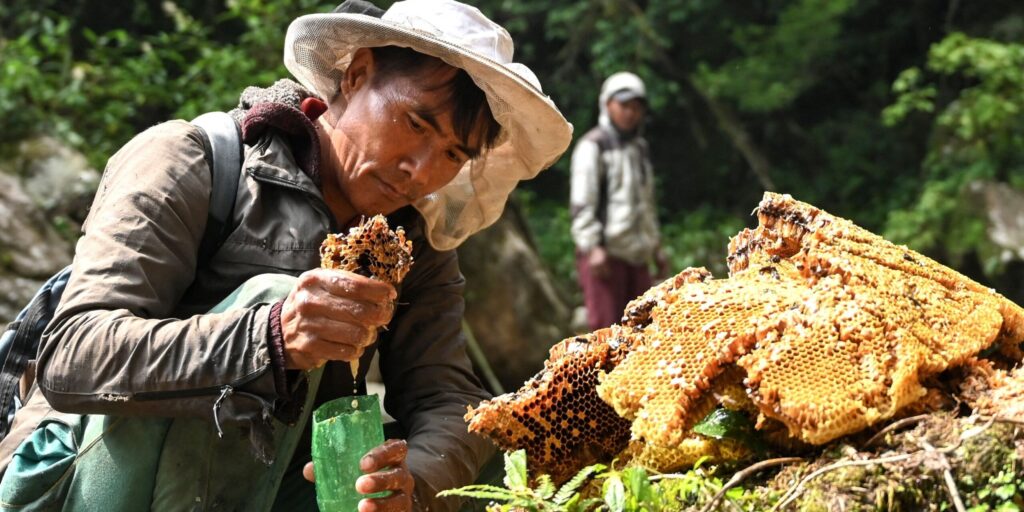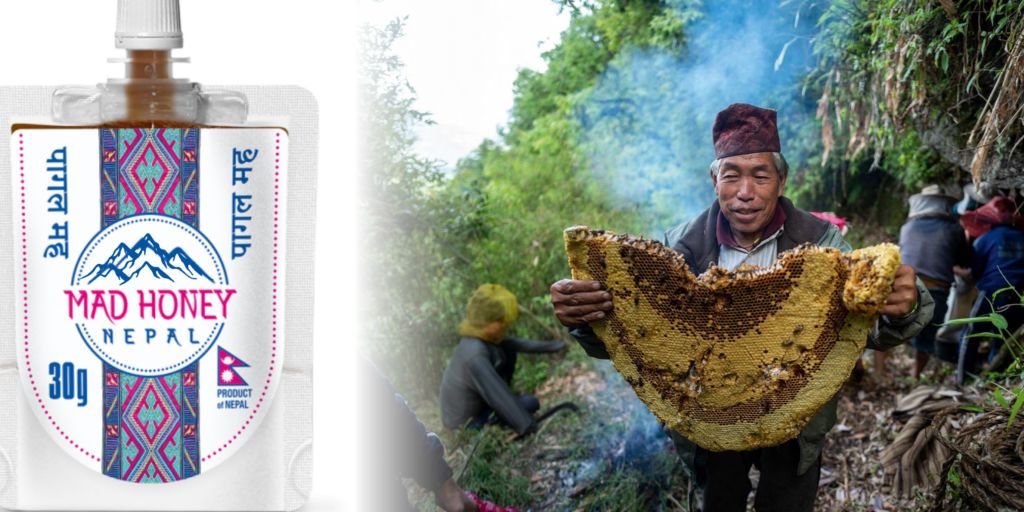A Sweet Mystery and the Golden Trap
High in the rugged terrains of Nepal’s Himalayas, amidst the towering cliffs and dense forests, exists a rare and potent substance Himalayan Mad Honey. This honey, produced by the giant Himalayan honeybee (Apis laboriosa), is not just a sweet treat but a powerful elixir with hallucinogenic properties. Harvesting it is a perilous tradition that intertwines with the cultural fabric of Nepalese communities. However, this ancient practice faces modern challenges that threaten its existence.
The Origins of Mad Honey
Mad honey is produced when bees collect nectar from specific species of rhododendron, particularly Rhododendron ponticum and Rhododendron luteum, which contain grayanotoxins. These neurotoxins, when consumed in sufficient quantities, can cause a range of symptoms from dizziness to hallucinations. Historically, mad honey has been used both medicinally and recreationally, with accounts dating back to ancient civilizations.

The Honey Hunting Tradition
Among the Gurung and Kulung communities of Nepal, honey hunting is a centuries – old tradition. Brave individuals scale towering cliffs using rope ladders to reach the hives of Apis laboriosa. This dangerous endeavor is not only a means of livelihood but also a spiritual practice, with rituals performed to honor the cliff gods and ensure safety during the harvest. The honey collected is then used in various ways, from medicinal applications to consumption for its psychoactive effects.

The Science Behind Mad Honey
The psychoactive properties of mad honey are attributed to grayanotoxins, which affect the central nervous system by binding to sodium channels, leading to symptoms such as low blood pressure, dizziness and in some cases, hallucinations. The concentration of these toxins varies depending on factors like the type of rhododendron and environmental conditions. While some seek out mad honey for its intoxicating effects, it is important to approach its consumption with caution due to the potential for poisoning.

Medicinal and Recreational Uses
Traditionally, mad honey has been used in Nepalese medicine to treat ailments such as sore throats, hypertension and digestive issues. Its psychoactive properties have also led to its use in spiritual ceremonies and as a recreational drug. In some cultures, small amounts are consumed to enhance sexual performance or to experience mild euphoria. However, due to the variability in toxin concentrations, the effects can be unpredictable and misuse can lead to serious health issues.

Economic and Cultural Significance
For many communities in Nepal, honey hunting is more than just a source of income, it is a vital part of their cultural identity. The practice supports local economies and provides a means of subsistence in remote areas. The sale of mad honey, particularly to international markets, has become a significant economic activity. However, the declining availability of hives and changing environmental conditions pose threats to this traditional livelihood.

Environmental Challenges
The practice of honey hunting is increasingly under threat due to environmental changes. Climate change has led to unpredictable weather patterns, affecting the flowering of rhododendrons and the behavior of bees. Additionally, deforestation and the use of pesticides have contributed to the decline in bee populations. These factors not only impact honey production but also the broader ecosystem, as bees play a crucial role in pollination.
The Future of Mad Honey
The future of mad honey and the tradition of honey hunting depend on sustainable practices and conservation efforts. There is a growing need for awareness and education about the ecological importance of bees and the preservation of rhododendron species. Community based conservation initiatives, along with responsible harvesting practices, can help ensure that this unique tradition continues for generations to come.
Conclusion
Himalayan mad honey is more than just a rare delicacy; it is a symbol of the intricate relationship between humans and nature in the highlands of Nepal. The tradition of honey hunting embodies resilience, spirituality and a deep connection to the land. As modern challenges threaten this ancient practice, it is imperative to recognize its cultural and ecological significance and take steps to preserve it. For more information you can Contact Us





